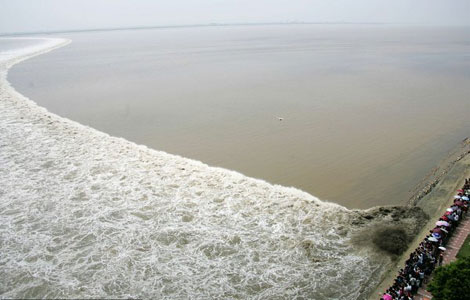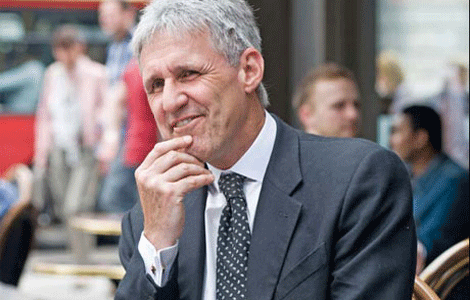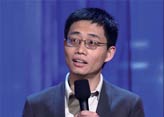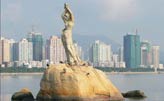Perils seen in relying on building boom
Updated: 2011-09-16 08:41
By Hu Haiyan (China Daily)
|
|||||||||
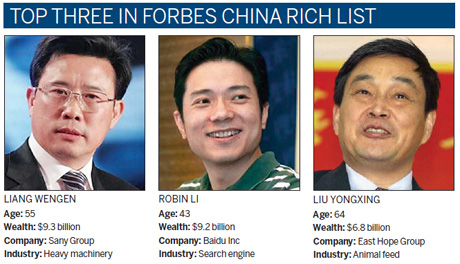
More balanced approach needed in future economic restructuring policies, say experts
Though the number of billionaires has been steadily increasing in China, fuelled largely by the infrastructure and real estate boom, it has also raised serious doubts on whether such a growth model is sustainable.
Such doubts have risen after the recently published Forbes China 400 and Hurun rich lists awarded the top slot in the rankings to a heavy machinery magnate.
While the changed pecking order in the rich list indicated that economic growth is on a firm footing in China, it also showed that growth is now more broad-based, with a host of entrepreneurs from other industries also figuring in the list.
According to the rankings, machinery tycoon Liang Wengen, the co-founder of Sany Group is the richest person in China with a personal fortune of over $9.3 billion (6.8 billion euros). The bulk of his fortune comes from the 58 percent stake he holds in Sany Group, which also has two listed companies in its fold.
Liang is not the only person to have gained from Sany's good fortunes. According to the Forbes list, six other company officials are also present on the rich list.
According to a ranking put out by Forbes on March 9 this year, Liang was ranked 114th globally with a net worth of $8 billion. In that rankings the top slot in China was occupied by 43-year-old Internet entrepreneur Robin Li, the chief executive and co-founder of search engine Baidu Inc. Li ranked 95th in the world with personal wealth of over $9.4 billion.
But in just six months that ranking has been upset with Liang taking the top slot and Li moving to the second spot in the China list with a net worth of $9.2 billion. Liu Yongxing, chairman of East Hope Group, China's biggest animal feed producer, came in third with a fortune of $6.8 billion.
According to industry experts and analysts, Liang's personal fortunes swelled in the last six months due to the massive boom in construction and infrastructure development.
"The construction spree and increased spending on infrastructure construction in China has triggered strong demand for Liang's heavy construction equipment. The company cashed in on this demand and its shares performed well on the bourses," says Li Xunlei, chief economist at Guotai Junan Securities Co Ltd.
But Li feels that the China Rich List is only a reflection of what has happened and not a clear indicator of the future. "I am not too sure whether the boom in infrastructure construction and real estate will last," he says.
Li says that there are several limitations now in place for infrastructure construction like railways and road networks. "The restrictions have already impacted Sany shares and they are nowhere near their earlier peaks," he says.
Some analysts, however, feel that though there is still a huge need for real estate and infrastructure construction in China, the real concern is the huge debts being run up by local governments.
Lu Jinyong, director of the China Research Center for Foreign Investment at the University of International Business and Economics, says that since China is still in the middle path of urbanization, construction and infrastructure development will continue to get top priority.
"The market for real estate and infrastructure construction industries remains bullish for the next 30 years, but with a slower growth rate."
Lu feels that it is important to strike a balance between infrastructure development and the local governments' strengths, and feels that "urbanization should not be realized through uncontrollable debts".
This years' Forbes China Rich List reveals that just three persons in the top 10 count property as one of their main sources of wealth.
(China Daily 09/16/2011 page3)




